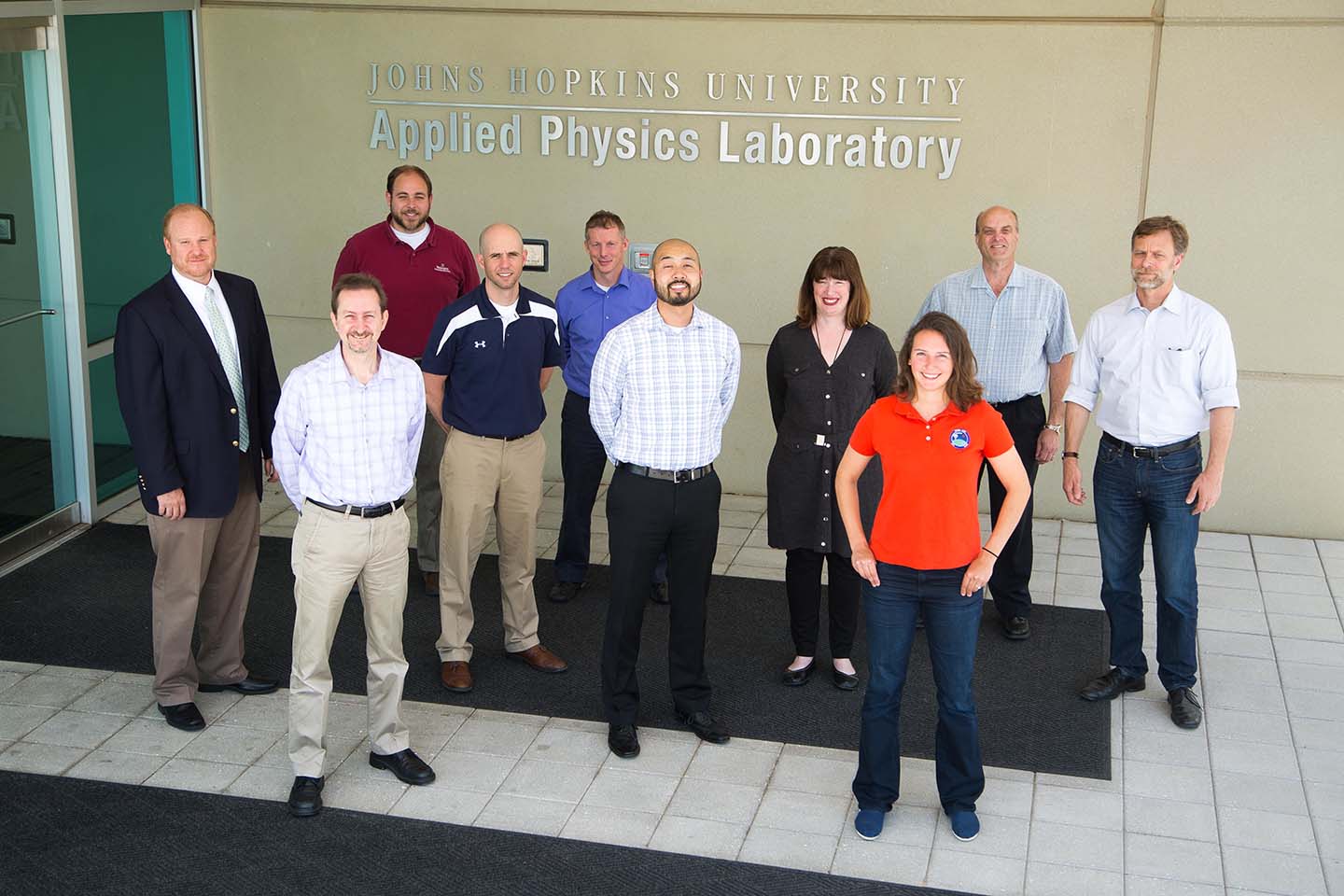Press Release
BOPPS Team Soars Again with NASA Group Achievement Award
Wed, 06/22/2016 - 11:16
The APL team that designed and implemented the Balloon Observation Platform for Planetary Science (BOPPS) in 2014 was awarded NASA’s prestigious Group Achievement Award for its work and successes.
“The BOPPS mission was an ambitious effort with many unique challenges,” said Mike Ryschkewitsch, APL’s Space Exploration Sector head. “We knew the mission was ambitious, but the APL team was ready to whatever they needed to do to make BOPPS a success.”
The APL-designed and -built BOPPS gondola weighed 5,200 pounds, stood 22 feet tall and measured eight feet wide. APL built and tested the gondola and its systems, including the infrared camera and 0.8-yard telescope. On Sept. 25, 2014, it was carried to a height of about 127,000 feet by a stratospheric balloon from NASA’s Columbia Scientific Balloon Facility in Fort Sumner, New Mexico, and studied two comets (Siding Spring and Jacques) and the dwarf planet Ceres.
Balloon-based platforms offer affordable options for space science, and BOPPS was a highly successful proof of that concept. After the flight, BOPPS Principal Investigator Andy Cheng of APL said: “BOPPS has acquired an awesome dataset which I can’t wait to analyze. It’s the first planetary science dataset from a stratospheric balloon in over 40 years.”
The NASA Group Achievement Award is given to any combination of government and/or nongovernment individuals for an outstanding group accomplishment that has contributed substantially to NASA’s mission. The award criteria measure the quality of results and level of impact on programs or operations; effective management of cost and schedule; and customer satisfaction. Additional credit is given for development of innovative approaches, use of and contributions to lessons-learned data banks, and/or success in responding to unforeseen crises.
The NASA Glenn Research Center in Cleveland provided mission management and engineering support, and the Balloon Program Office at NASA’s Wallops Flight Facility, Wallops Island, Virginia, provided the balloon systems and launch and recovery operations for the BOPPS gondola. The Southwest Research Institute, Boulder, Colorado, built and operated BOPPS’ near ultraviolet/visible light instrument. Glenn managed the BOPPS project for the NASA Planetary Science Division, Science Mission Directorate at NASA Headquarters in Washington, D.C.
The APL staff members named on the award are:
- Dewey Adams
- Steve Arnold
- Brian Bauer
- Pietro Bernasconi
- Andy Cheng
- Kimberly Griffin
- Karl Hibbitts
- Stuart Hill
- Steve Izon
- Steve Osterman
- Kate Stambaugh
